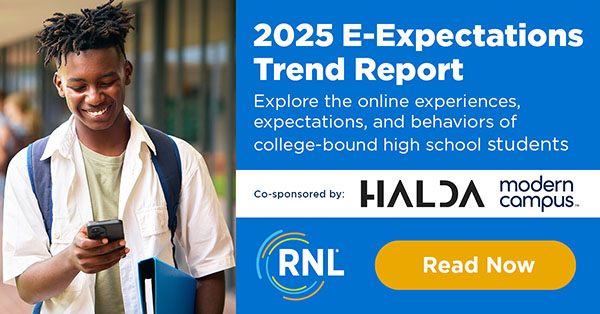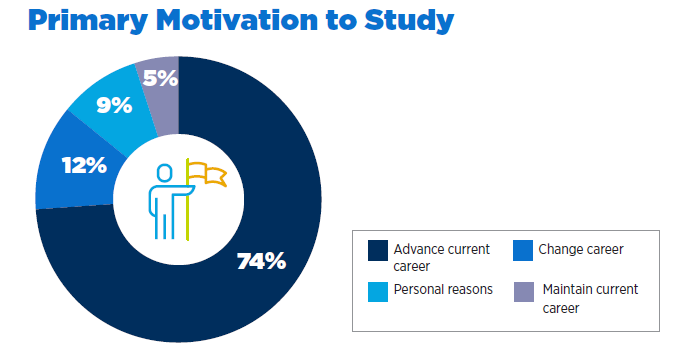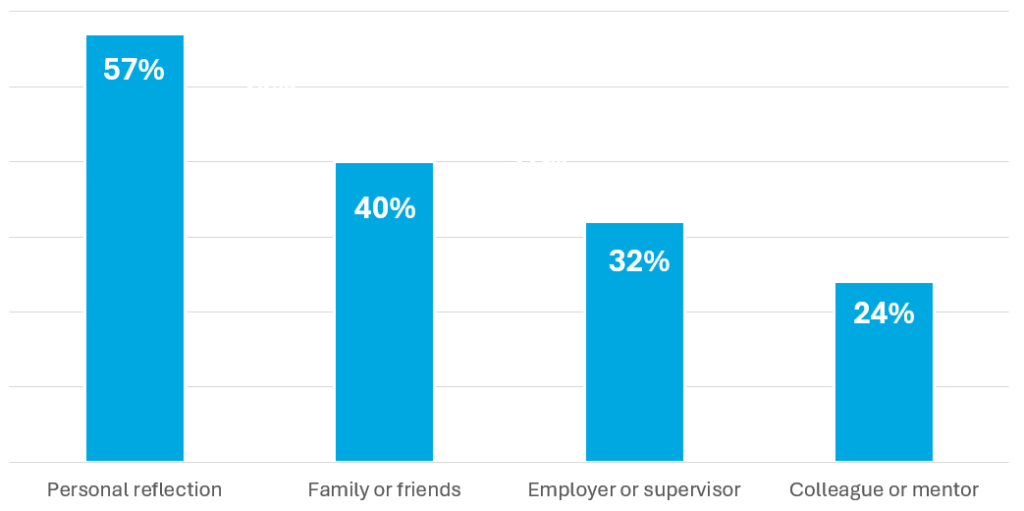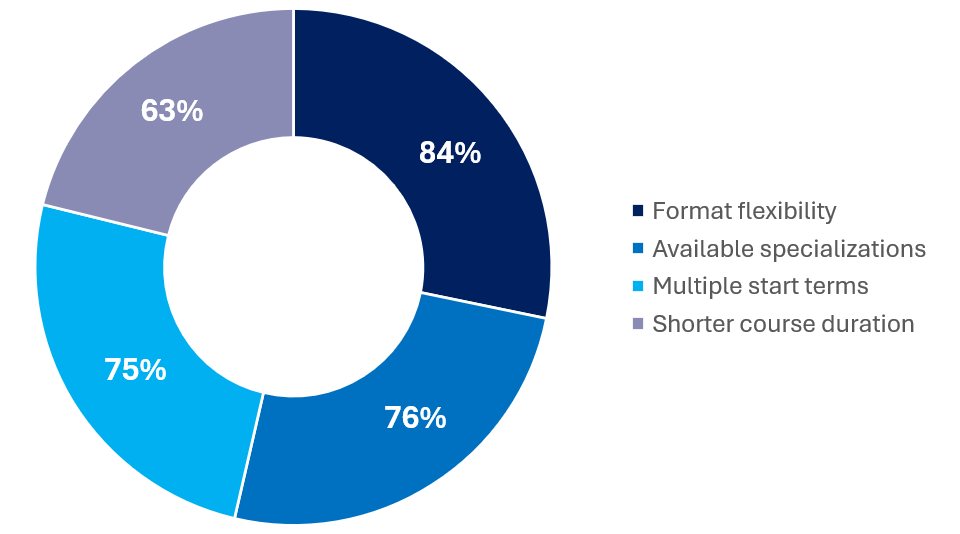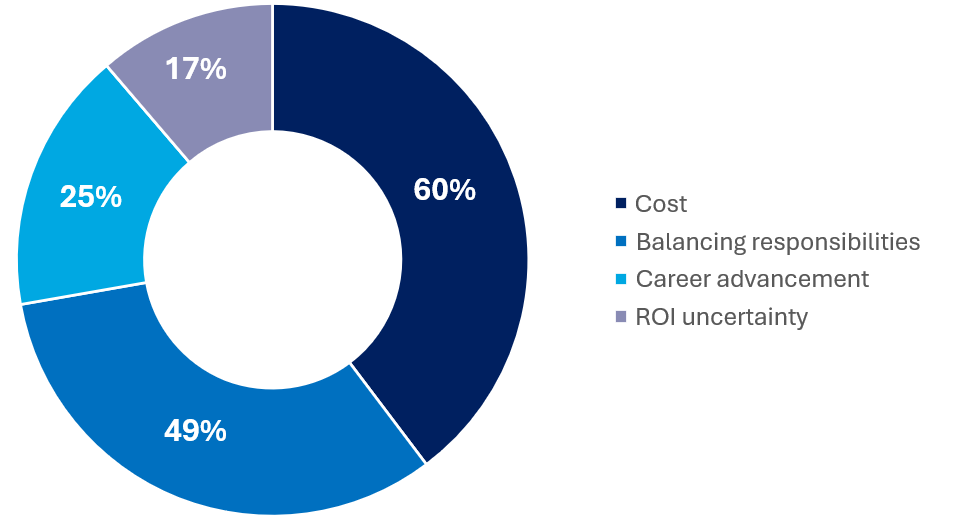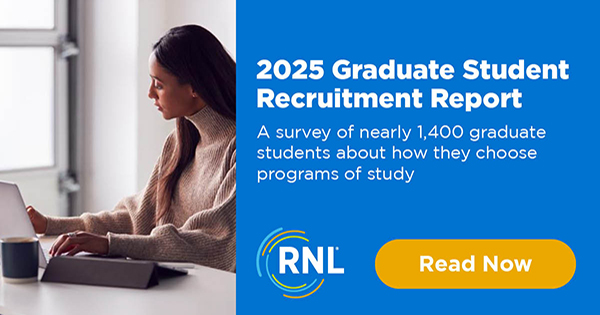How one-to-one storytelling turns information into enrollment
Students are saturated with content in their daily lives, and video is a huge part of what they see and consume. However, as the 2025 E-Expectations Report reveals, students are also no longer impressed by one-size-fits-all marketing. They want outreach that feels personal, relevant, and authentic (RNL, Halda, & Modern Campus, 2025). What resonates with them is personalization that shows colleges see them and not just another applicant.
And when a personalized video connects those dots, combining storytelling, emotion, and data, something powerful happens: curiosity turns into commitment.
Why personalization works
This is clear. When students see themselves reflected in a story, they engage more deeply and feel a stronger sense of belonging.
Zhao and colleagues (2024) tested this through a creative experiment involving personalized animated films. Participants watched short stories where their moods and habits shaped the life of a little corgi trying to reach the moon. The results? Viewers not only enjoyed the video, but they also identified with it. Some even started calling the character “me.” That sense of recognition is exactly what colleges aim to spark when they send a personalized admit or financial aid video.
Banerjee et al. (2023) found similar effects in the education technology sector. When apps delivered recommendations based on individual interests, student engagement increased, especially among those who typically ignored recommendations. The message for higher education marketers is clear: those who ignore your emails or skip your events may simply be waiting for the right message at the right moment.
Finally, Deng et al. (2024) showed that personalization is not just about what content appears; it is also about how it appears. TikTok’s algorithm, for example, predicts which segments you will watch and preloads them for a frictionless experience. When it comes to personalized video for students, the same principle applies. A message that loads quickly, feels smooth, and speaks directly to their needs earns attention and trust.
Real results from personalized video campaigns
You can see the full potential of personalization when colleges put it into practice, especially with the channel students use the most: video. Institutions across the country are using personalized video to make complex information clear, emotional moments unforgettable, and online discovery truly interactive. We work with our partners Allied Pixel, the pioneer in personalized video technology, to help campuses make that personalized connection that drives enrollment.
Personalized financial aid videos: Turning confusion into clarity
At Coastal Carolina University, affordability became an opportunity for connection. Through Personalized Financial Aid Videos (PFAVs), the university walked students and families through their aid packages in plain English and Spanish, helping them understand what college would actually cost. The outcome was remarkable:
- Students who viewed their PFAV were nearly twice as likely to enroll as those who did not
- More than 75% of students who clicked an action button after watching enrolled.
- Coastal Carolina credits the videos as a major factor in enrolling a record-breaking incoming class.
What could have been a confusing moment became one of clarity and confidence.
Admit hype videos: Building emotional momentum
Once affordability is clear, emotion takes center stage. The University of Cincinnati used Personalized Admit Hype Videos as part of its “Moments That Matter” campaign, designed to celebrate admitted students in a way that felt deeply personal.
The results spoke for themselves: over 1,200 students confirmed their enrollment after watching their personalized video. One student shared, “It made me feel like I’ve found a new home. Thank you for putting this together!” A parent commented, “This is the absolute coolest thing I’ve seen in college recruiting, and this is my third child. Well done!!!”
It is hard to imagine a clearer example of how belonging drives yield.
Real-time web videos: Personalization in 30 seconds or less
Before a student ever inquires, colleges like Aquinas College are using Personalized Real-Time Web Videos to create immediate engagement. Visitors to the Aquinas website can build their own video in under 30 seconds, featuring content relevant to their interests.
Over 70% of visitors choose to create their own personalized clip, an extraordinary engagement rate. Even better, the form captures names, emails, and optional phone numbers, providing the admissions team with high-quality leads while offering students a memorable first touchpoint.
These examples show that personalization is not just a creative flourish. It is a measurable driver of engagement, confidence, and enrollment.
What personalized video means for enrollment leaders
For enrollment and marketing teams, personalized video has shifted from a novelty to a necessity. The results are too compelling to ignore. Here is what to focus on next:
- Start with data. Use CRM or application data to personalize content around major, aid status, or next steps.
- Make it one-to-one. Include each student’s name, major, and relevant details so it feels like their story.
- Keep it short. The sweet spot is 30–60 seconds, enough to inform without overwhelming.
- Guide with purpose. End every video with one clear call to action: confirm, apply, schedule, or log in.
- Measure and refine. Track engagement and conversion metrics to keep improving.
- Build belonging. Blend data with empathy, because personalization is about people, not just platforms.
When done right, personalized video meets both emotional and practical needs. It answers questions and builds confidence, but it also sparks joy, pride, and a sense of belonging. That is the sweet spot where conversion happens.
So, if you want students not just to watch, but to feel seen, do not just write it, film it. Keep it short, real, and personal. Because when a few seconds can change a student’s decision, the most powerful word in recruitment might just be their name.
Want to see the full picture?
Find out how personalized video can create powerful engagement at every stage of the enrollment journey. Watch our webinar, How to Ramp Up Student Engagement Through Personalized Videos, to learn how you can add personalized videos to your marketing and recruitment efforts.
You can also download the 2025 E-Expectations Trend Report to see the full findings on how today’s high-school students explore, evaluate, and choose colleges, plus what they expect from every click, video, and message.
References:
- Banerjee, R., Ghosh, A., Nanda, R., & Shah, M. (2023). Personalized Recommendations In Edtech: Evidence From A Randomized Controlled Trial. Proceedings of the 14th ACM Conference on Learning at Scale. ACM.
- Deng, W., Fan, Z., Fu, D., Gong, Y., Huang, S., Li, X., Li, Z., Liao, Y., Liu, H., Qiao, C., Wang, B., Wang, Z., & Xiong, Z. (2024). Personalized Playback Technology: How Short Video Services Create Excellent User Experience. IEEE Transactions on Multimedia. Advance online publication.
- RNL, Halda, & Modern Campus. (2025). 2025 E-Expectations Report. Ruffalo Noel Levitz.
- Zhao, X., Lee, J., Maes, P., & Picard, R. (2024). A Trip To The Moon: Personalized Animated Movies For Self-Reflection. Proceedings of the ACM on Human-Computer Interaction, 8(CSCW2), 1–27.







